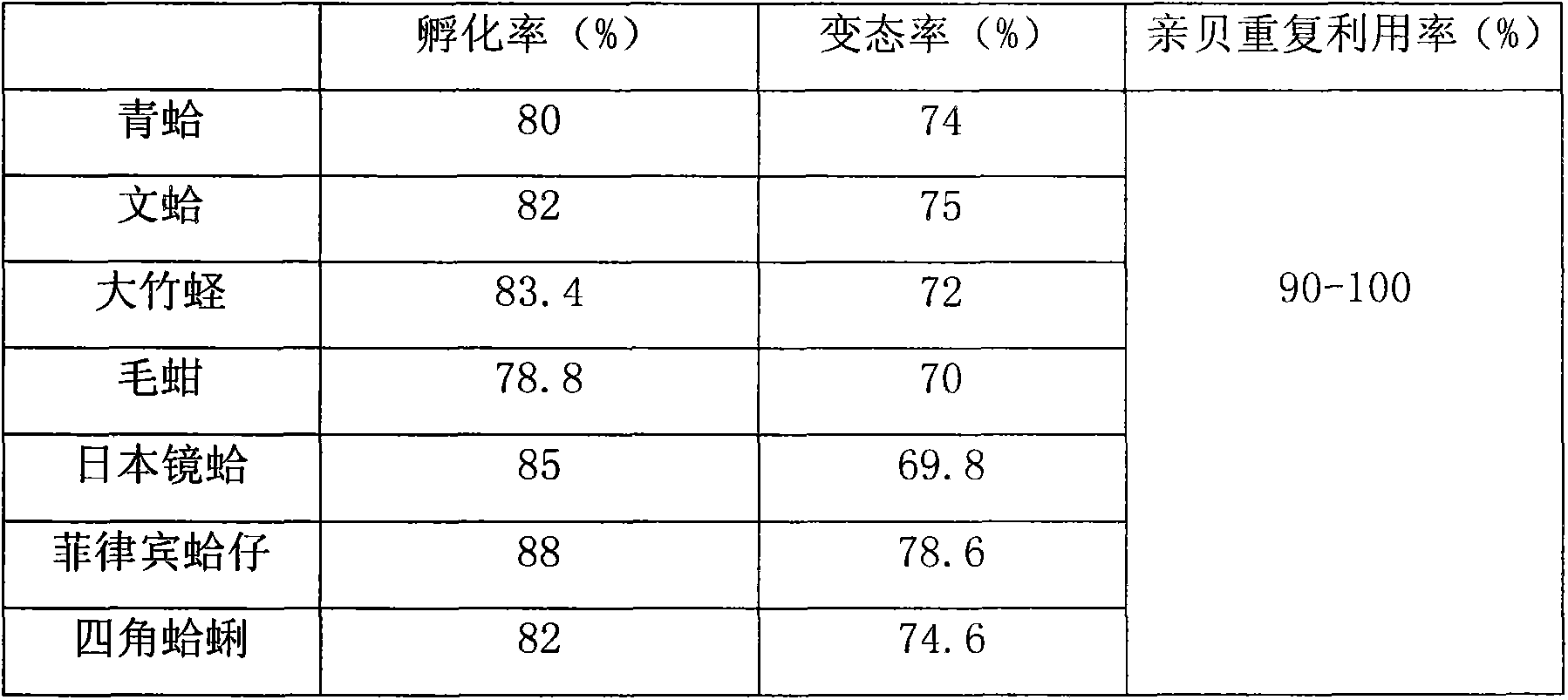Method for hastening parturition of shellfishes by sterilized and neutralized sea water
A seawater and labor induction technology, applied in chemical instruments and methods, seawater treatment, application and other directions, can solve the problems of low reuse rate of seed shellfish, cumbersome operation, high cost, etc. Good results
- Summary
- Abstract
- Description
- Claims
- Application Information
AI Technical Summary
Problems solved by technology
Method used
Image
Examples
Embodiment 1
[0013] On June 12, 40 green clam species were selected and the surface of the shell was washed with seawater. Place in the indoor nursery pond. The nursery pond is 5 meters long, 2 meters wide, and 1 meter high. The sand filter water depth in the pool is about 0.9 meters. Natural water temperature, change the water to clear the bottom once a day, and cast bait twice a day. Half a month later, the seed shells were dissected and the plumpness reached 91%. Microscopic examination of the gonads revealed that the gonads were mature.
[0014] Seawater treatment for shellfish induction: lead the outdoor seawater into the sedimentation tank, settle for 12 hours, and then be filtered by sand filter and 300 mesh screen and then introduced into the indoor storage tank, add sodium hypochlorite or bleach powder for disinfection, the effective chlorine concentration in the water is 50mg / L, and mix well After that, let it stand for 8 hours, sprinkle saturated sodium thiosulfate solution and ...
Embodiment 2
[0017] In mid-April, 100 large razor clams were selected and placed in 10m with 1m deep sand and filtered seawater. 2 ×1 indoor nursery pond, natural water temperature, full water change every day, clearing the bottom once. During this period, the feed is mainly fresh Nitzschia and Chlorella, feed density is 30000cell / mL, daily feed Bait 2 times.
[0018] On May 5, the seed shells were dissected, the plumpness was 90%, and the gonads were mature under microscope.
[0019] Seawater treatment for inducing labor: outdoor seawater sedimentation and standing for 15 hours. After sand filtering, it is connected to the indoor storage tank through a 300-mesh screen, and sodium hypochlorite or bleaching powder is added for disinfection. The effective chlorine concentration in the water is 70mg / L, and the mixture is evenly mixed and then left for 8 hours. Use saturated sodium thiosulfate solution to neutralize and eliminate residual chlorine before inducing labor, and the dosage is based on t...
Embodiment 3
[0022] On May 19th, 40 four-cornered clam species were selected and placed in 10m with 1m deep sand and filtered seawater. 2 ×1 indoor seedling ponds are kept temporarily, at natural water temperature, the water is fully changed every day, and the bottom is cleared once a day. During this period, fresh Chaetoceros and Chlorella are the main feeds, and the feed density is 10,000 / mL, daily Bait 2-3 times.
[0023] On June 23, the seed shells were dissected, the plumpness was 92%, and the gonads were mature under microscope.
[0024] June 24: Outdoor seawater sedimentation and standing for 12 hours. After sand filtration, it is connected to the indoor storage tank through a 300-mesh screen, and sodium hypochlorite or bleaching powder is added for disinfection. The effective chlorine concentration in the water is 80mg / L. After mixing, let it stand for 8 hours. Use saturated sodium thiosulfate solution to neutralize and eliminate residual chlorine before inducing labor, and the dosage i...
PUM
 Login to View More
Login to View More Abstract
Description
Claims
Application Information
 Login to View More
Login to View More - R&D
- Intellectual Property
- Life Sciences
- Materials
- Tech Scout
- Unparalleled Data Quality
- Higher Quality Content
- 60% Fewer Hallucinations
Browse by: Latest US Patents, China's latest patents, Technical Efficacy Thesaurus, Application Domain, Technology Topic, Popular Technical Reports.
© 2025 PatSnap. All rights reserved.Legal|Privacy policy|Modern Slavery Act Transparency Statement|Sitemap|About US| Contact US: help@patsnap.com

